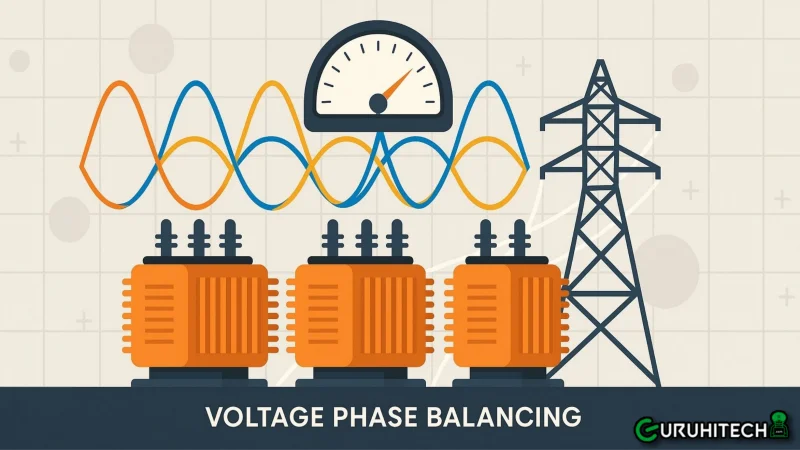The Role of Voltage Phase Balancing in Energy Savings

In the quest for greater energy efficiency and cost savings, businesses are increasingly examining the deeper layers of their electrical infrastructure. One area that holds considerable potential yet often flies under the radar is voltage phase balancing. Particularly in industrial and commercial settings where equipment operates across three electrical phases, achieving and maintaining voltage balance can significantly impact energy usage, equipment efficiency, and long-term operational costs.
Understanding Voltage Phase Balancing and Its Impact
Voltage phase balancing refers to the process of ensuring that the power drawn across each of the three electrical phases is as evenly distributed as possible. In an ideally balanced system, each phase handles an equal load. However, in real-world scenarios, imbalance is common due to fluctuating equipment demands or uneven load distribution. This imbalance can cause a variety of inefficiencies including overheating equipment, increased energy consumption, and power quality issues that ultimately affect system reliability.
When voltage phases are unbalanced, the system compensates by drawing more current than necessary on the overloaded phases. This leads to increased loss in cables and transformers, significantly reducing the overall energy efficiency. Many industrial facilities unknowingly absorb these hidden costs over time. By implementing voltage phase balancing solutions, organisations can not only reduce these inefficiencies but also extend the lifespan of key electrical assets.
Beyond direct energy savings, phase balancing contributes to a range of indirect benefits. Equipment running on unbalanced voltage tends to experience more frequent wear and tear, leading to premature malfunctions and downtime. Motors, for example, are particularly vulnerable; even a relatively minor imbalance can cause excessive heat generation and torque variations that degrade performance over time. By optimising voltage balance, machinery operates closer to its design specifications, reducing the maintenance burden and improving overall facility output.
Balancing Phases in Modern, Renewable-Integrated Systems
Phase balancing is also particularly important when integrating renewable energy sources or on-site generation systems, as these technologies can introduce variability and asynchronous power loads. A phase-balanced system can help accommodate these challenges more smoothly, ensuring a more stable and compatible electrical environment. As businesses increasingly aim for energy sustainability, having a resilient electrical backbone is not just a benefit—it’s a necessity.
Furthermore, regulatory compliance is a key driver in enhancing electrical system quality. Certain industries and jurisdictions, including parts of the UK and EU, require businesses to meet efficiency benchmarks that are directly impacted by system balance. Under audits or inspections, proof of voltage phase optimisation can serve as evidence of commitment to performance standards and environmental responsibility. In some cases, adopting best practices in energy management opens the door to tax incentives or government-backed efficiency programs.
The implementation process for voltage phase balancing typically begins with a comprehensive load analysis. Engineers conduct assessments to identify where imbalances exist, their severity, and the underlying causes. Solutions may involve rearranging load distributions, enhancing monitoring systems for real-time data, or installing automatic balancing equipment. While the upfront investment in such optimisation can vary, many organisations see a return on investment through energy savings, reduction in unplanned maintenance, and avoidance of costly equipment replacements.
A Strategic Investment in Reliability and Efficiency
From a strategic perspective, businesses that proactively manage their voltage conditions demonstrate foresight in risk mitigation and operational continuity. Electrical imbalances can lead not just to high energy bills, but to unpredictable faults that disrupt production and affect customer satisfaction. In sectors where uptime is critical—such as manufacturing, healthcare, and data centres—voltage phase balancing is more than a technical enhancement—it’s a pillar of reliability.
As companies continue to modernise and digitise their operations, the energy systems powering these innovations must keep pace. Voltage phase balancing, while technical in nature, exemplifies how deep optimisation of infrastructure can unlock both economic and environmental benefits. When coupled with broader voltage optimisation strategies, businesses can take a significant step toward comprehensive energy efficiency.
In conclusion, voltage phase balancing offers an essential yet often overlooked opportunity for industrial and commercial facilities aiming to reduce energy waste, protect equipment, and ensure reliability. As energy demands rise and sustainability goals tighten, addressing this foundational aspect of electrical systems is not just smart—it’s strategic. Businesses that invest in understanding and correcting voltage imbalance position themselves ahead of the curve in both performance and profitability.
Ti potrebbe interessare:
Segui guruhitech su:
- Google News: bit.ly/gurugooglenews
- Telegram: t.me/guruhitech
- X (Twitter): x.com/guruhitech1
- Bluesky: bsky.app/profile/guruhitech.bsky.social
- GETTR: gettr.com/user/guruhitech
- Rumble: rumble.com/user/guruhitech
- VKontakte: vk.com/guruhitech
- MeWe: mewe.com/i/guruhitech
- Skype: live:.cid.d4cf3836b772da8a
- WhatsApp: bit.ly/whatsappguruhitech
Esprimi il tuo parere!
Che ne pensi di questa notizia? Lascia un commento nell’apposita sezione che trovi più in basso e se ti va, iscriviti alla newsletter.
Per qualsiasi domanda, informazione o assistenza nel mondo della tecnologia, puoi inviare una email all’indirizzo [email protected].
Scopri di più da GuruHiTech
Abbonati per ricevere gli ultimi articoli inviati alla tua e-mail.
